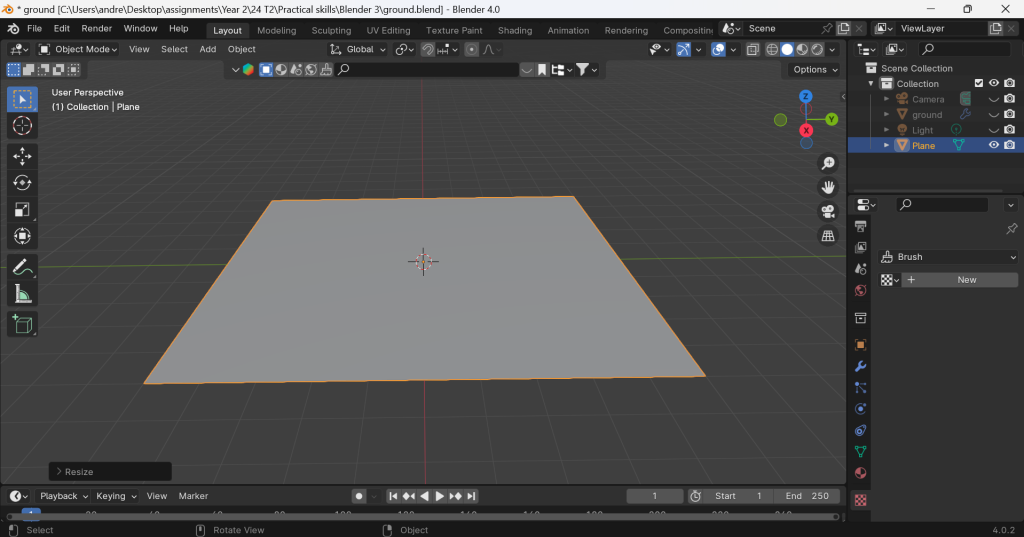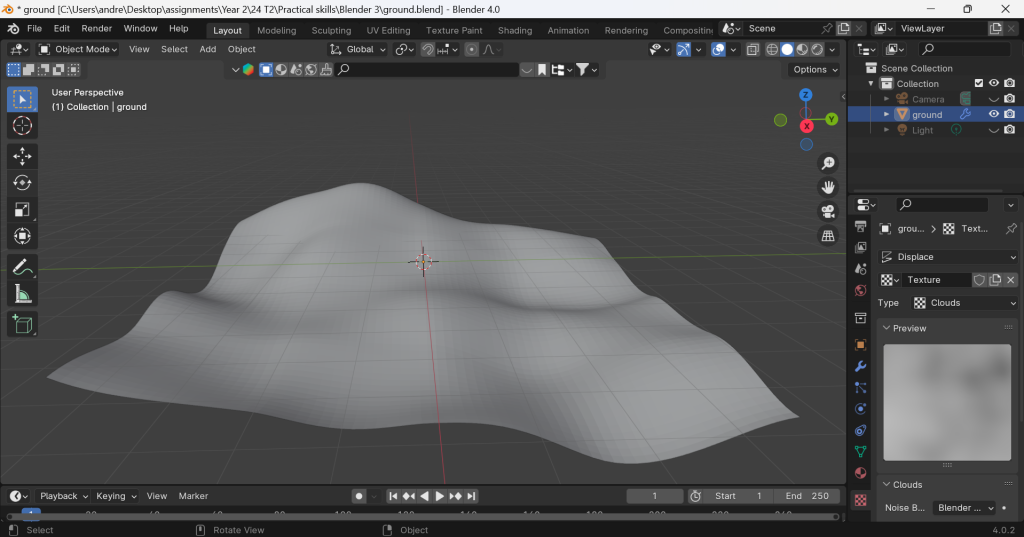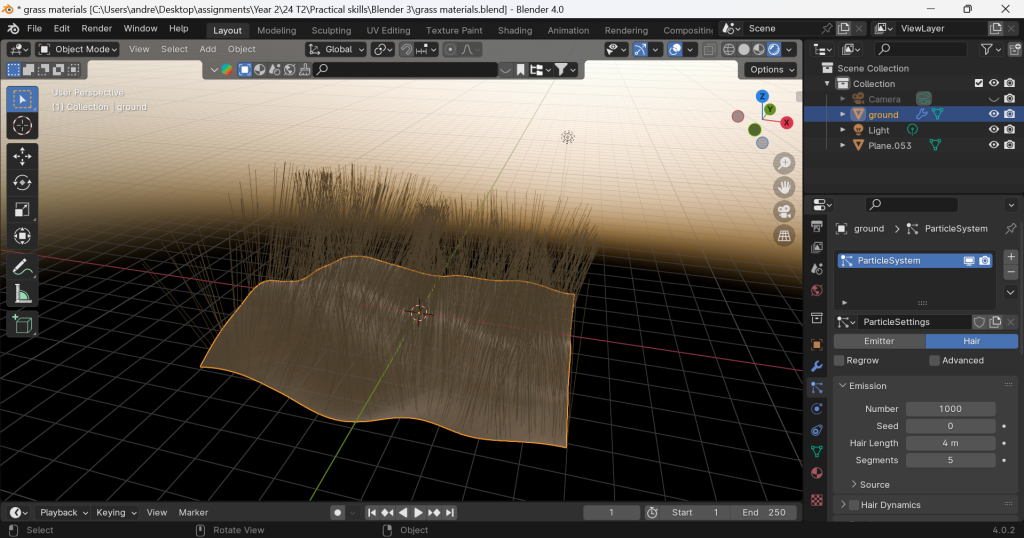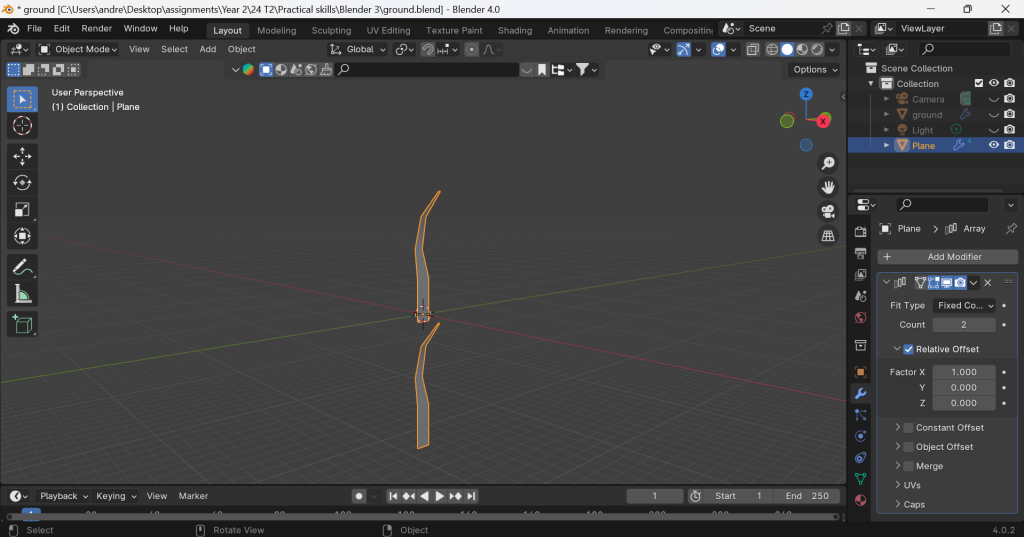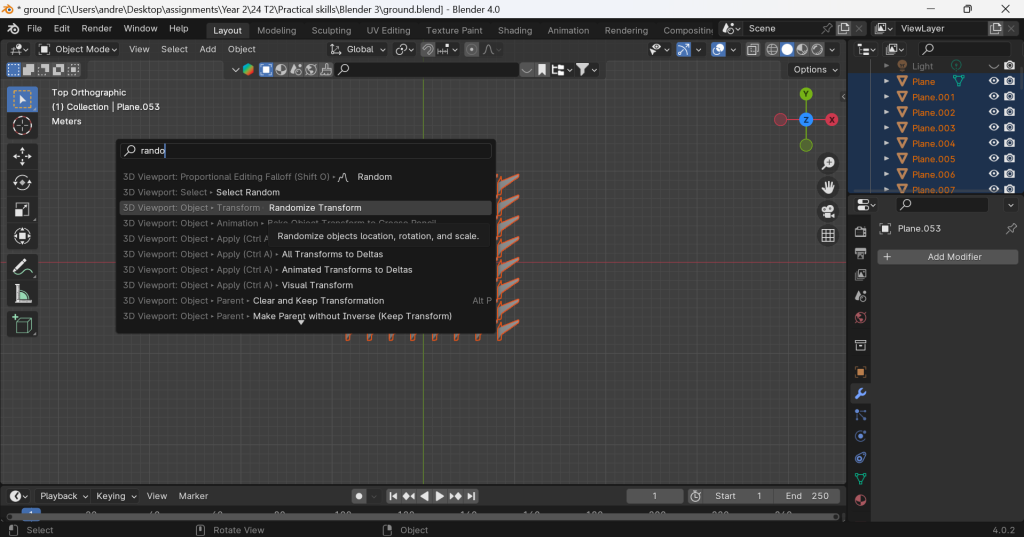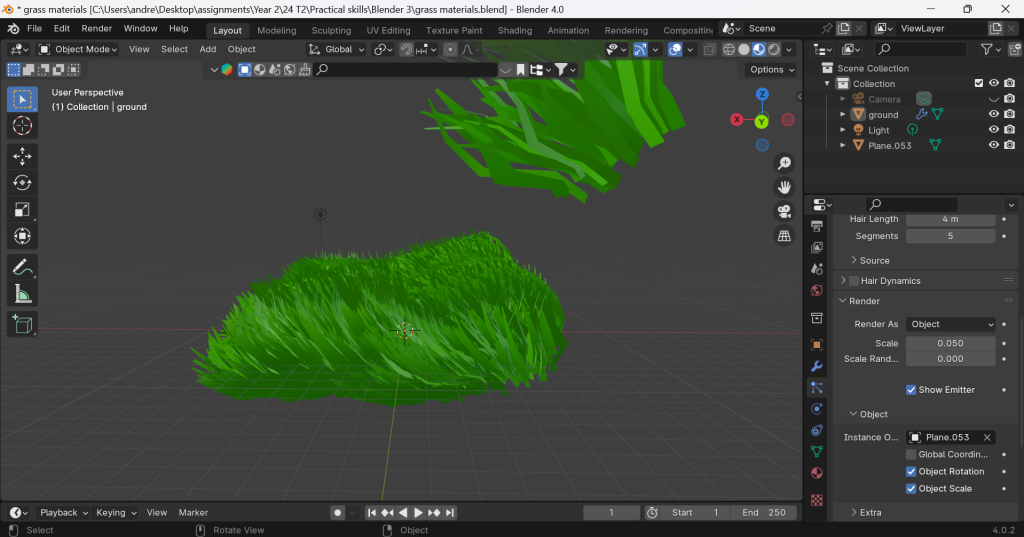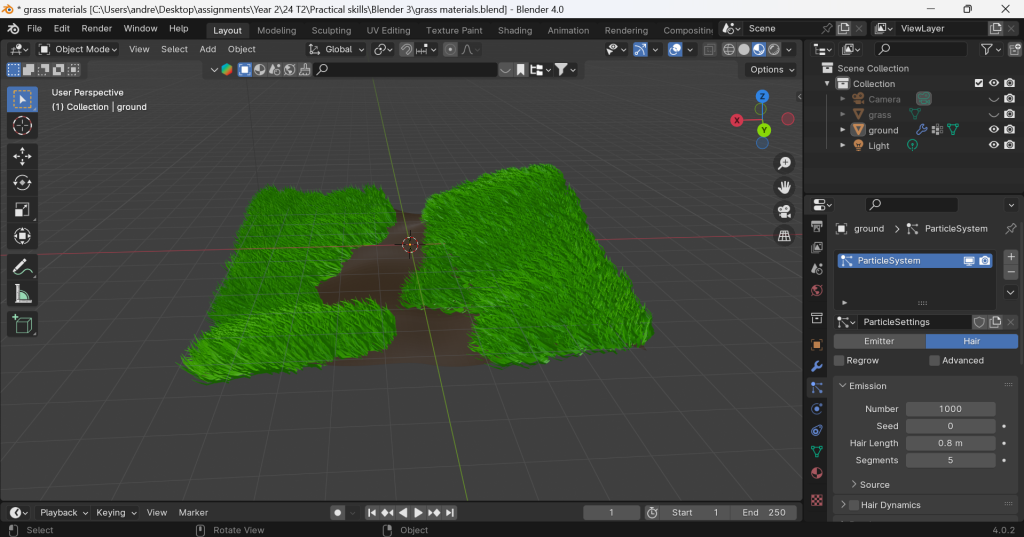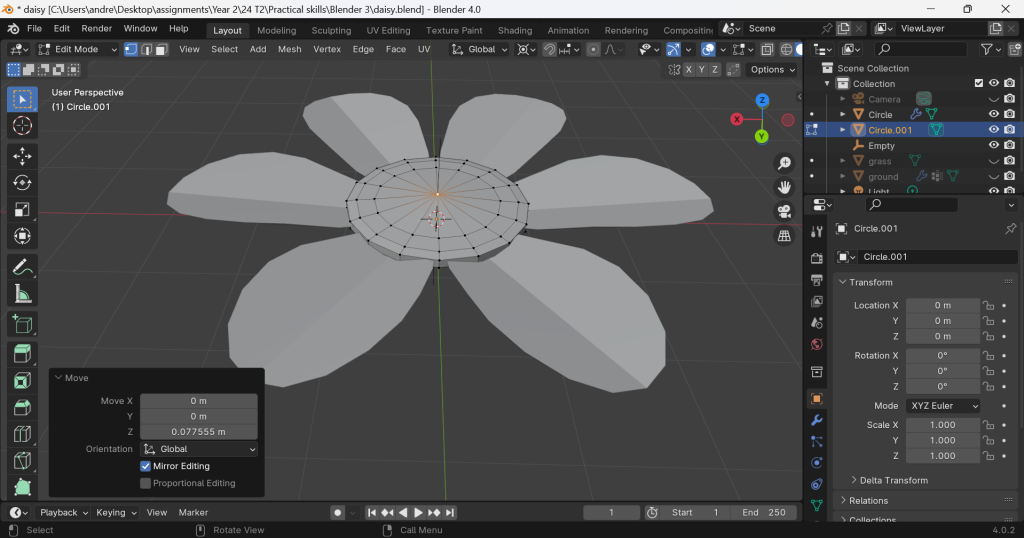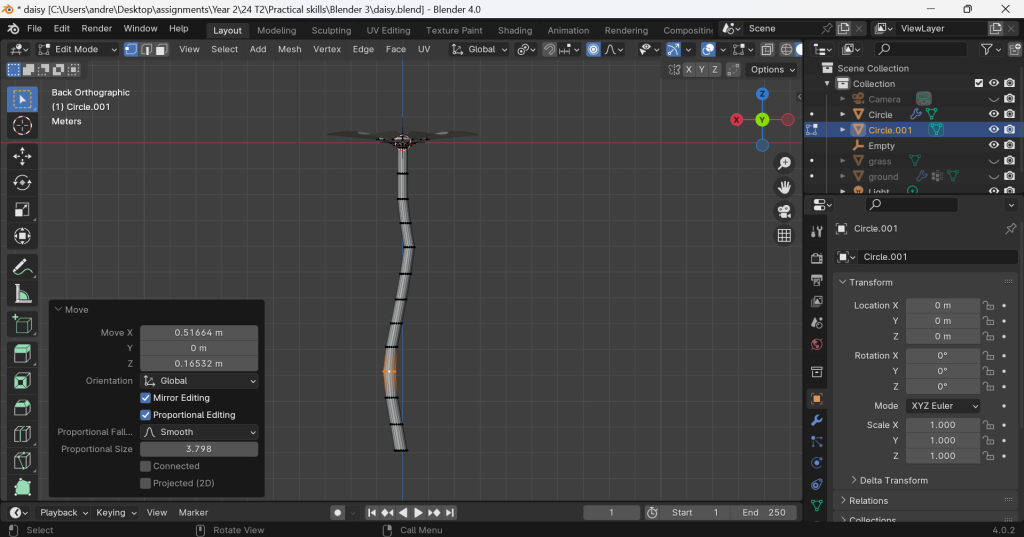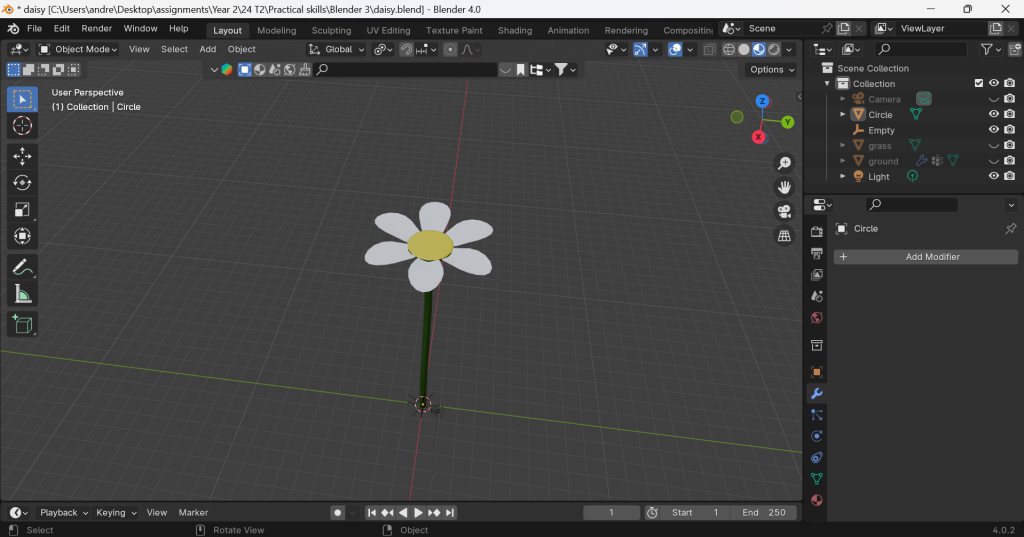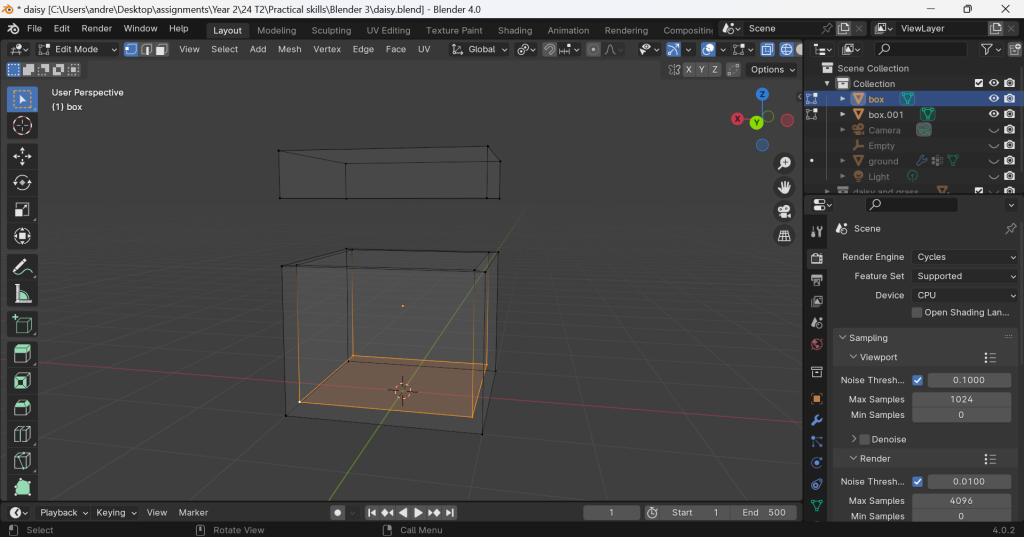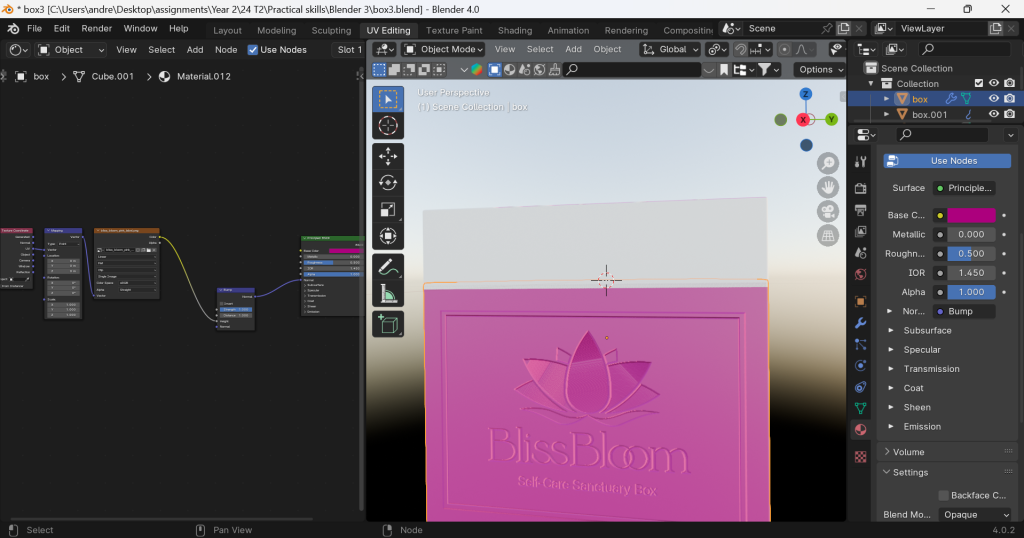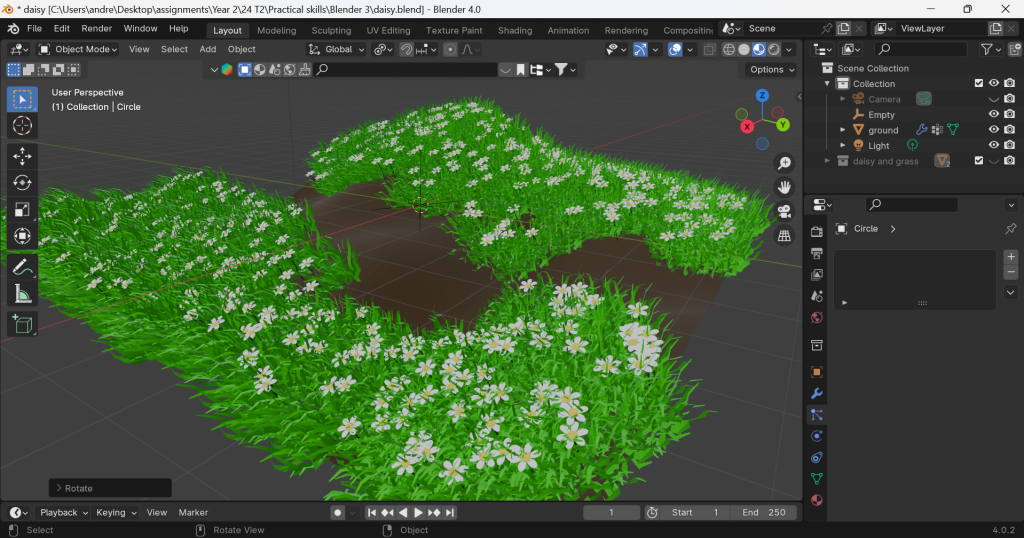3D Animation and Lighting
Brief:
My ultimate objective is to develop a brief animated presentation lasting between 20 and 60 seconds. This can be achieved either by making it directly in Blender or by importing my finished 3D assets from Substance Painter into Blender. Alongside this, I’ll create a suitable environment for my models, arrange and render an animation sequence highlighting each asset. Additionally, I’ll provide a storyboard outlining my planned animation sequence, analyze the lighting design, share insights gained from the project, and finally, submit the animation rendered in Blender as an MP4 file.
Storyboard:
Design developing process:
To build the whole scene, I began by shaping a plane using tools from the modelling menu, aiming to simulate a terrain-like surface. By applying a clouds texture and adjusting its size, I aimed to give it a natural appearance. Subsequently, I employed a hair particle system to generate grass and daisy flowers, refining their shapes with proportional editing. Adjusting the length and rotation of the grass and flowers added realism. I then crafted a pathway amidst the grass to provide a space for my models, essentially realizing the nature scene depicted in my storyboard.
Final Animation:
I rendered all my images into a sequence, then I brought them into Premier Pro to put together a nice and smooth animation.
Engaging with 3D modelling software like Blender to complete my assignment project has been both challenging and rewarding. Initially, I felt a mix of excitement and apprehension as I delved into a new realm of creativity. As I navigated through the software’s interface, I encountered moments of frustration and confusion, grappling with complex tools and techniques. However, with perseverance and dedication, I gradually began to feel more confident in my abilities.
However, it has ignited a passion for digital creation and provided me with invaluable skills that I can carry forward into future endeavours.
Reference list:
Music

